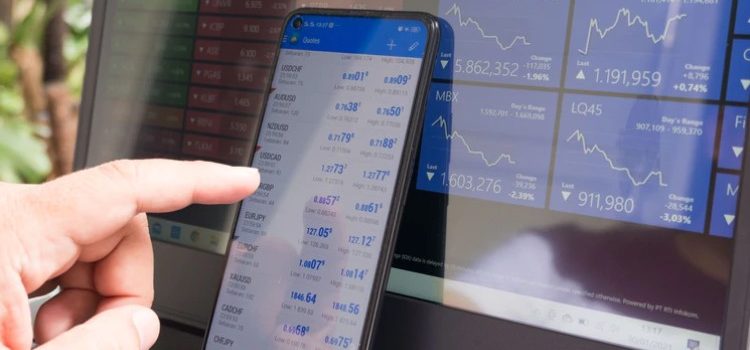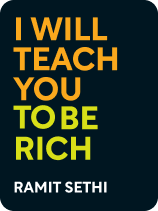

This article is an excerpt from the Shortform book guide to "I Will Teach You to Be Rich" by Ramit Sethi. Shortform has the world's best summaries and analyses of books you should be reading.
Like this article? Sign up for a free trial here .
What is asset diversification? What is the purpose of diversifying your investment portfolio?
Asset diversification refers to the diversity of your investments within each asset class in invest in (e.g. stocks, bonds, etc). Diversification protects your investments in case one type of stock or bond doesn’t perform well in a given time period. So, for example, if you’re in your twenties and have 90% of your money invested in stocks and the other 10% invested in bonds, you have a solid asset allocation—but if all that money is invested in just large-cap stocks and government bonds, your portfolio isn’t diversified.
When you’re ready to invest, you have two options: choosing your own portfolio or buying a single target date fund. We’ll discuss both strategies below.
Investment Option 1: Choose Your Own Portfolio
If you value control over convenience and you’re up to the challenge of learning all about the logistics of investing, choosing your own portfolio is the path for you. In this option, you’ll manage your own asset diversification.
Before you commit to choosing your own portfolio, make sure you understand the downsides to this approach. Most people who manage their own portfolios can’t match the market, let alone beat it, because they overreact to small changes in the market and end up buying and selling frequently, which ultimately diminishes their returns. If you’re determined to choose your own portfolio, you’ll need to resist the temptation to sell when the market dips, which is easier said than done. Plus, you’ll need to understand the market well enough to determine your own specific asset allocation, then manually rebalance it every year.
If choosing your own portfolio still sounds like the right choice for you, start by deciding how to allocate your portfolio. Sethi recommends using this template from David Swensen, who manages Yale’s endowment and is famous for maintaining a 13.5% return over thirty years of investing (remember, most fund managers can’t even match the average 8% market return). Swensen recommends dividing your investments like this:
- 30% in domestic equities. These are funds composed of small-, mid-, and large-cap stocks in American companies.
- 15% in developed-world international equities. These are funds composed of stocks from companies in developed countries like Germany and France.
- 5% in emerging market equities. These stocks are from companies in developing countries like Brazil and India. They’re generally considered riskier than developed-world entities, which is why they make up such a small percentage of your overall portfolio.
- 20% in real estate investment trusts (REITs). REITs are essentially funds that invest in real estate rather than stocks.
- 15% in government bonds. As we saw earlier in this chapter, bonds are a stable investment that help balance the risk in your portfolio.
- 15% in treasury inflation-protected securities (TIPS). These are one of the safest investments because they’re protected against inflation, but they typically have much smaller returns than the other investing options listed above.
You can use Swensen’s model as-is or adjust it based on your own needs and goals.
Once you have your ideal asset allocation planned out, it’s time to start researching specific index funds within each of those categories. (Remember, there are thousands of index funds available, so choosing your own portfolio requires a lot of research!) Start your search using the websites of investment companies like Vanguard and Schwab (information about specific funds is usually under the “Products and Services” tab). Here’s how to choose the exact funds to include in your portfolio.
- Look for funds with low fees (expense ratios of no more than 0.2%).
- Dig into each fund you’re considering to see how it aligns with your asset allocation (for example, if a stock fund is made up entirely of domestic equities, you’ll have to find specific international index funds to balance your portfolio).
- Research the fund’s performance over the last 10 to 15 years.
What If You Can’t Afford Multiple Funds?
Ideally, your search turned up three to seven funds that meet your criteria. Since each index fund typically has a $1,000 minimum investment, that’s $3,000 to $7,000 total for initial investments alone. If you can’t afford to buy into all your ideal funds right now, don’t worry—you can set up a step-by-step plan to buy into each fund over time.
To start, choose the first index fund you want to buy into (this should be a stock fund so that you can start early and take full advantage of compounding over time). Then, take a look at the plan for expenditure you made in Chapter 4. Whatever you set aside for investing each month (after your 401(k) contribution), save that amount every month instead until you have enough to buy into your first fund. Once you buy into that first fund, you’ll set up a small automatic investment into that fund, then use the rest of your monthly investment allowance to save up for the next fund.
- Let’s clarify this with an example. Say you have $500 per month to invest on your own (after your 401(k) contribution) according to your plan. If each fund you want to buy into has a $1,000 minimum, start by saving your monthly $500 investment allowance for two months. That gives you enough money to buy into the first fund. Then, set up an automatic $100 monthly contribution to that fund. You now have $400 per month in unallocated investment funds. If you save that $400 for another three months, you’ll have $1,200—enough to buy into your second index fund. You can keep repeating this process until you own all the index funds you need for a solid portfolio.
Once you’ve saved up enough to buy into all your index funds, you’ll split your monthly investment allowance across all those funds. Use your asset allocation to decide how to split up that money instead of just dividing it evenly. For example, if you’re using David Swensen’s asset allocation, 30% of your portfolio is invested in domestic equities—which means you should contribute 30% of your monthly investment allowance to your domestic equities funds.
Investment Option 2: Target Date Funds
If keeping track of a portfolio full of stocks, bonds, and index funds makes your head spin, don’t worry. There’s an easier way to invest: Target date funds (also called “target retirement” or “lifecycle” funds), which automatically rebalance your investments based on the year you plan to retire. That way, you don’t have to worry about adjusting your asset allocation as you age—a target date fund will automatically reallocate more of your investments into safer options like bonds as you get closer to retirement. This is one of the biggest benefits of target date funds because it saves you the headache of reevaluating your investments every single year.
Target date funds also provide automatic diversification because they’re essentially funds made up of other funds (and those funds, in turn, are made up of different stocks). That means you can own stock in a huge variety of companies just by buying into a single target date fund, giving you all the benefits of diversification without the headache of juggling a complex portfolio.
Target date funds are a great example of the “good enough” mentality: They don’t always have the very best returns, but they make it incredibly easy to invest, so they’re good enough. If you’re chasing the biggest possible returns and would rather sit back and let your money grow without having to worry about it, target date funds are the perfect choice. To find the right target date fund for you, you can start your research on investment company websites (just as you would if you were researching index funds). These funds are typically named after the target retirement year (for example, if you plan to retire in 2045, you can look for funds called “Target Retirement 2045”).
How to Actually Invest
One crucial thing to note is that funding an investment account is different from actually investing that money. If you set up automatic contributions to your 401(k) and Roth IRA earlier in this summary, you haven’t actually invested that money yet—and it will just sit there, earning zero returns, until you do! This is a common mistake that can cost you thousands of dollars in lost potential returns.
When you’re ready to take the final step and invest the money in your investment accounts, start with your 401(k). Companies that offer 401(k)s typically only offer a small handful of funds for you to choose from (to see the funds your company offers, talk to your HR representative). These will usually be divided based on your risk tolerance, so you can choose between an aggressive fund, a balanced fund, or a conservative fund (as we saw with asset allocation, if you’re young, you can and should invest as aggressively as possible).
Next, you can invest the money in your Roth IRA. The great thing about Roth IRAs is that you can invest in any fund you like. This is where you have the freedom to invest in the target date funds or index funds that you found in your research (and still get the tax benefits of investing through your Roth IRA). When you’re ready to buy in, log into your Roth IRA, search the name of the fund, and click “buy.”
Automatic Investing
Once you own a target date fund or a handful of index funds, you should keep contributing money to them each month on top of your initial investment. You’ll do this using the automatic payment infrastructure you set up in Chapter 5. Automation is especially important for investing because you continue automatic contributions every month, regardless of whether the market is going up or down. In practice, that means that even if the stock market drops severely, you continue funding your investments because you know that those dramatic highs and lows will even out over time to a modest-but-predictable gain of about 8%.
It can be scary to keep buying into the market during a recession, but consider the long-term view: When the market is down, you’re essentially buying shares on sale that will almost certainly appreciate in value over the course of your 40 or 50 years of investing. When you invest automatically, you don’t have to worry about buying and selling stocks, which means you won’t incur any trading fees. You also won’t have to consciously think about investing because it will all be taken care of for you automatically.

———End of Preview———
Like what you just read? Read the rest of the world's best book summary and analysis of Ramit Sethi's "I Will Teach You to Be Rich" at Shortform .
Here's what you'll find in our full I Will Teach You to Be Rich summary :
- The small steps you can take towards living a "rich life"
- How to choose the right bank account and manage your credit cards
- How to create a financial system that grows your money automatically






